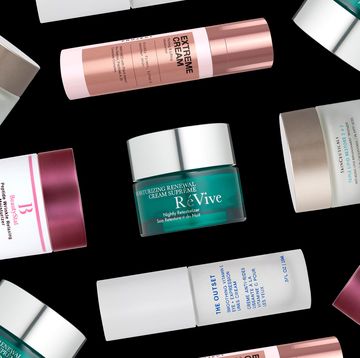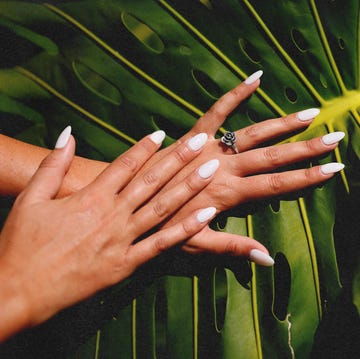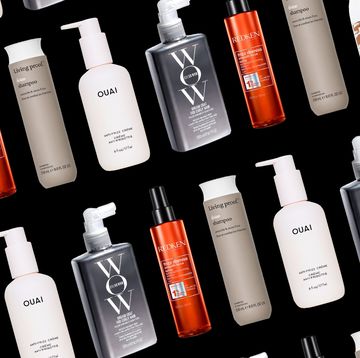It began with backlash from perpetually tan celebs like Gisele Bündchen, who reportedly said of some sunscreens, "I cannot put this poison on my skin." And while medical advice from models requires a large grain of salt, the tubes' ingredients — octocrylene? homosalate? — leave reason to wonder about that stuff. But you know what else has a bad rap? Melanoma. It's up about 300 percent since the '70s, but only 31 percent of adults wear SPF daily, according to the National Cancer Institute. You need "unnatural" ingredients — the SPF of most plant-based options tops out at 7. "People worry about chemicals on their face, but I'd rather chemicals than cancer," says dermatologist Debra Jaliman, M.D., author of Skin Rules. See, this sunblock-is-bad thing is one big misunderstanding.
The Worry: Sunscreen Causes Breast Cancer
The Facts: This rumor started after a 2008 CDC study found that 97 percent of Americans have oxybenzone in their system. The compound is in lots of beauty products, especially sunscreen, and nonhuman studies suggest it can mimic estrogen — too much of which ups your cancer risk. But the data is too limited to warrant a freakout. Via a statement, the American Cancer Society says it "encourages the use of FDA-approved sunscreens," which include those with oxybenzone. If you're nervous, choose sunblock (aka physical or mineral sunscreen), which relies on titanium dioxide or zinc oxide, rather than sunscreen.
The Worry: Sunscreen Gives You Skin Cancer
The Facts: This boils down to one controversial ingredient: retinyl palmitate. It's derived from vitamin A and may offer anti-aging benefits. Related chemicals called retinoids are in many (perfectly safe) night creams. "Some companies add it to sunscreen because it's an antioxidant," a wellness buzzword, says Dr. Jaliman. But it makes skin more sun-sensitive — the opposite of what you want from SPF. There are many options without it, so choose those. If you dab on retinoids before bed, use SPF in the a.m.
The Worry: Sunscreen Steals Your Vitamin D
The Facts: We absorb vitamin D in part through UVB rays, which sunscreens obviously protect against. But unless you're a vampire, you're getting some D anyway. "I wish sunscreen was this effective at blocking out sun!" says dermatologist Ranella Hirsch, M.D. "What's more, you don't need four hours at the beach to get enough." You take in plenty of D crossing the street — even if you've already SPF'd up. Have a doc check your nutrient levels; she may suggest a supplement or a D-rich diet (try salmon, tuna, and eggs).
The Worry: Sunscreen Hurts Your Lungs
The Facts: The FDA is looking into the safety of sprays — they're highly flammable, and harmless topical ingredients may be irritants if inhaled. Skip sprays on kids (they're more likely to breathe them in), but they're fine for adults. Apply sprays in a well-ventilated area, advises Dr. Hirsch. And for good measure, hold your breath.
Wear It Well: Apply at least two tablespoons' worth of a broad-spectrum mineral or physical sun- screen with an SPF of 25 or higher every day. Here are three our beauty editors love.
1.Tarte. Tarteguard 30 Sunscreen Lotion Broad Spectrum SPF 30, $32, sephora.com
2. Avéne. Mineral Light Hydrating Sunscreen Lotion SPF 50+, $36, dermstore.com
3. Jane Iredale. Glow Time Full Coverage Mineral BB Cream SPF 25, $48, janeiredale.com
This article was originally published as "When Did Sunscreen Get Scary" in the July 2015 issue of Cosmopolitan.Click here to get the issue in the iTunes store!

Virginia Sole-Smith is the author of The Eating Instinct: Food Culture, Body Image and Guilt in America, and writes the newsletter Burnt Toast.







